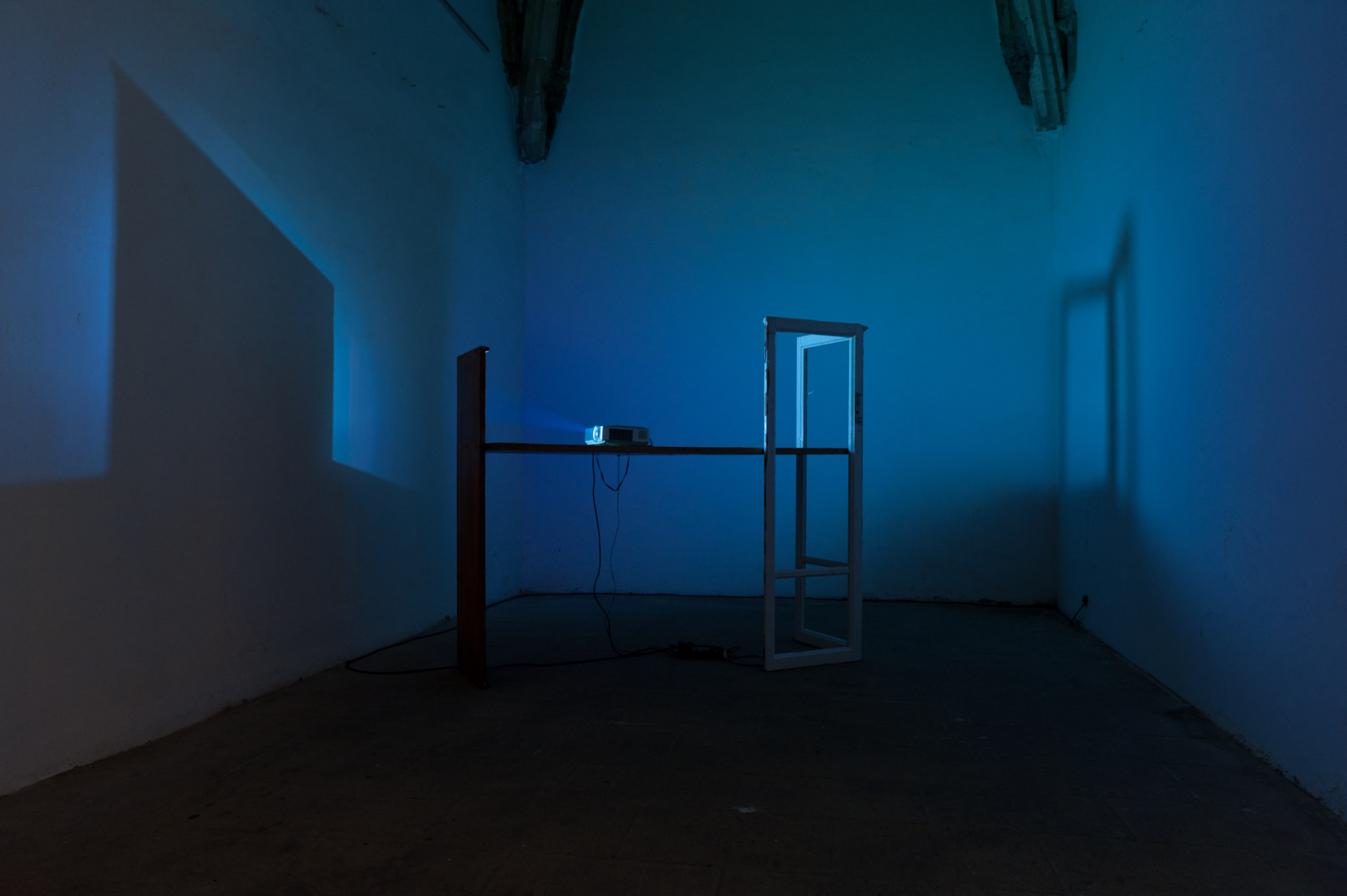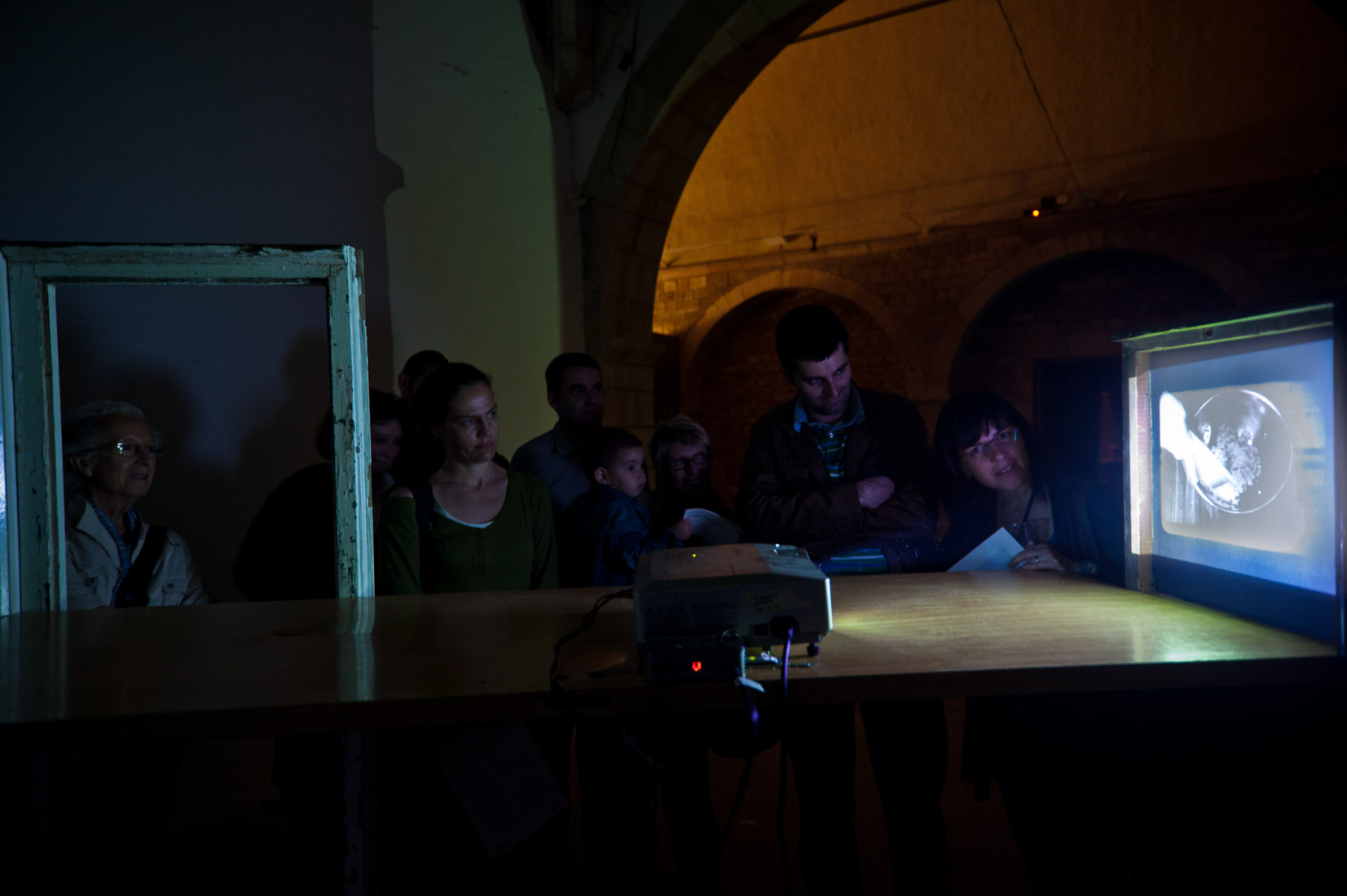Utopia, Ohio
Adrià Julià (Barcelona, 1974). He has held solo exhibitions at the Museo Tamayo (Mexico City), Insa Art Space (Seoul), OCMA (Newport Beach), LAXART (LA), Artists Space (NY), Room Gallery (Irvine), Sala Rekalde (Bilbao), Galería Soledad Lorenzo (Madrid), Sketch (London) and La Virreina (Barcelona). He has also participated in group shows at Generali Foundation in Viena, Akademie der Künste Berlin, and the 2007 Lyon Biennale, 7th Mercosur Biennale, and São Paulo Biennale XXIX. He is currently guest researcher at Jan van Eyck Academie and lives between the Netherlands and Spain.
Foreword: A potato, we take it apart, we reconstruct it and we end up with a Kartoffelklöße.
The temperature here is 12.39 degrees, with 54% humidity.
For the record, we shall keep a note of this data.
Melinda Smith
The exhibition utopia, ohio presents a series of new works –comprising sculptures, texts and 16 mm films– that revolve around thetheme of disaster and failure. The artist begins with a revision of extrinsic and visible working processes, analyzing the results and compiling situations and facts rooted in one particular historical event: the disappearance of a 19th-century Utopian community fashioned after the writings of Charles Fourier.
Julià takes a trip to the city of Utopia, about 45 miles to the southeast of Cincinnati. Back in 1846, the last members of a short-lived colony of Fourierists sold a brick building –a small phalanstère– to a group of Spiritualists who then decided to relocate it to the banks of the Ohio River, brick by brick. On December 13th, 1847, the Spiritualists held a dance to celebrate the opening of the reconstructed building. It was raining heavily and as the Ohio River rose it eventually caused the greatest flood in one hundred years, sweeping away anyone and anything in its path. Utopia’s current residents claim having seen the ghosts of these past partygoers emerging from the river and crossing the county road, as well as having heard their voices.
Melinda Smith, a leading researcher of paranormal activity in Eastern Ohio, carried out an investigation in an area below the ground that belonged to the Utopians. Water once again takes center stage and the leaks become research interference. Interested in interruptions and nature-based imperfections, Julià allows predefined or causal factors to dictate the project. For instance, the duration of a film becomes determined by the size of the camera and the length of the roll of film; in another situation, image and sound give way to insufficient light conditions or atmospheric interference. A film shoot comes to an end when the security guard interrupts.
The architectural structures proposed by Julià are not intended to copy existing ones, nor do they seek to deliver harmony between space and a predefined or apparent function. They rather propose to be susceptible to react at the moves and moods of the occupants or visitors that remain unsubordinated to any one specific order. The exhibit’s various elements generate a series of ghosts that in turn map, reflect, or project a variety of narratives and proposals that move away from the distant referential origins. Together they chart a landscape –always linked to human activity, to the presence and technological representation of history and the spirit of objects– that can simulta-neously span a multiplicity of timeframes.
With the special collaboration of Débora Antscherl. Thanks to: Chris McCarty, Kevin McCarty, Mary Ellen McCarty, Michael McCarty, Melinda Smith, Dorrie Tattersall, Berto Aussems, Ron Bernstein and Roger Miralles.
Colaborators






